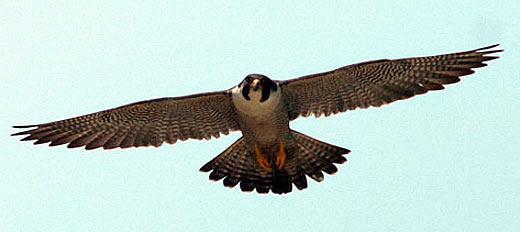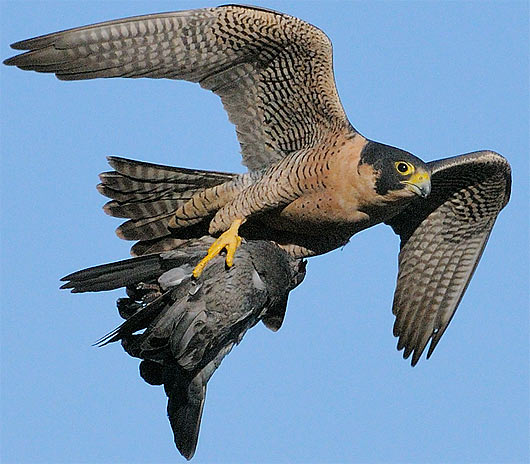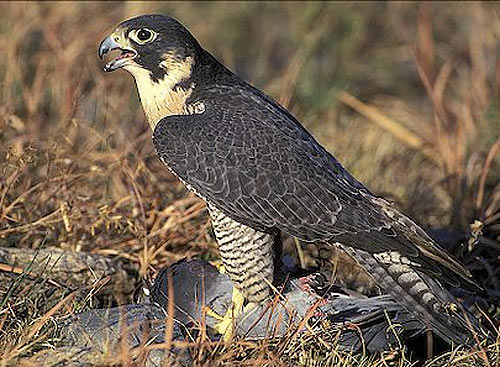Peregrine Falcon – Handsome, Fast and Well-Traveled

The Peregrine falcon is a large and powerful falcon. Ranging from 17 – 23 in (45 to 58 cm) in length, the females are on average 15 to 20% larger than the males and they’re also 40 to 50% heavier. Both males and females have deep steel gray-blue across their backs and wings with a dark cap and cheeks, underneath they are light colored sometimes white and sometimes peach. In flight, the falcons have a distinct shape with their long pointed wings and short tails. Their defensive call is a harsh, rapid and sharp “keck” sound and they make a long slurred wailing sound when they’re hungry.

There are about twenty subspecies found throughout most of the world (all continents but Antarctica). Three subspecies live across North America and some even live on the islands in the middle of the Pacific ocean and the Hawaiian islands. The falcon’s name comes from Peregrinus, this is Latin for foreigner, because the bird appears in such far-off locations.

Peregrine falcons feed almost exclusively on birds, eating up to 420 different species in North America and up to 2000 species worldwide. They can eat birds such as the crane, as large as 7 lbs (3 kg) and birds as small as hummingbirds. One of the fastest of birds as they dive or swoop, they can even catch animals that are very agile in flight such as swifts and bats. They generally catch their prey in the air but sometimes catch rodents or birds on the ground also. Their population numbers were severely affected by poisonous pesticides like DDT in the past but have for the most part recovered.

